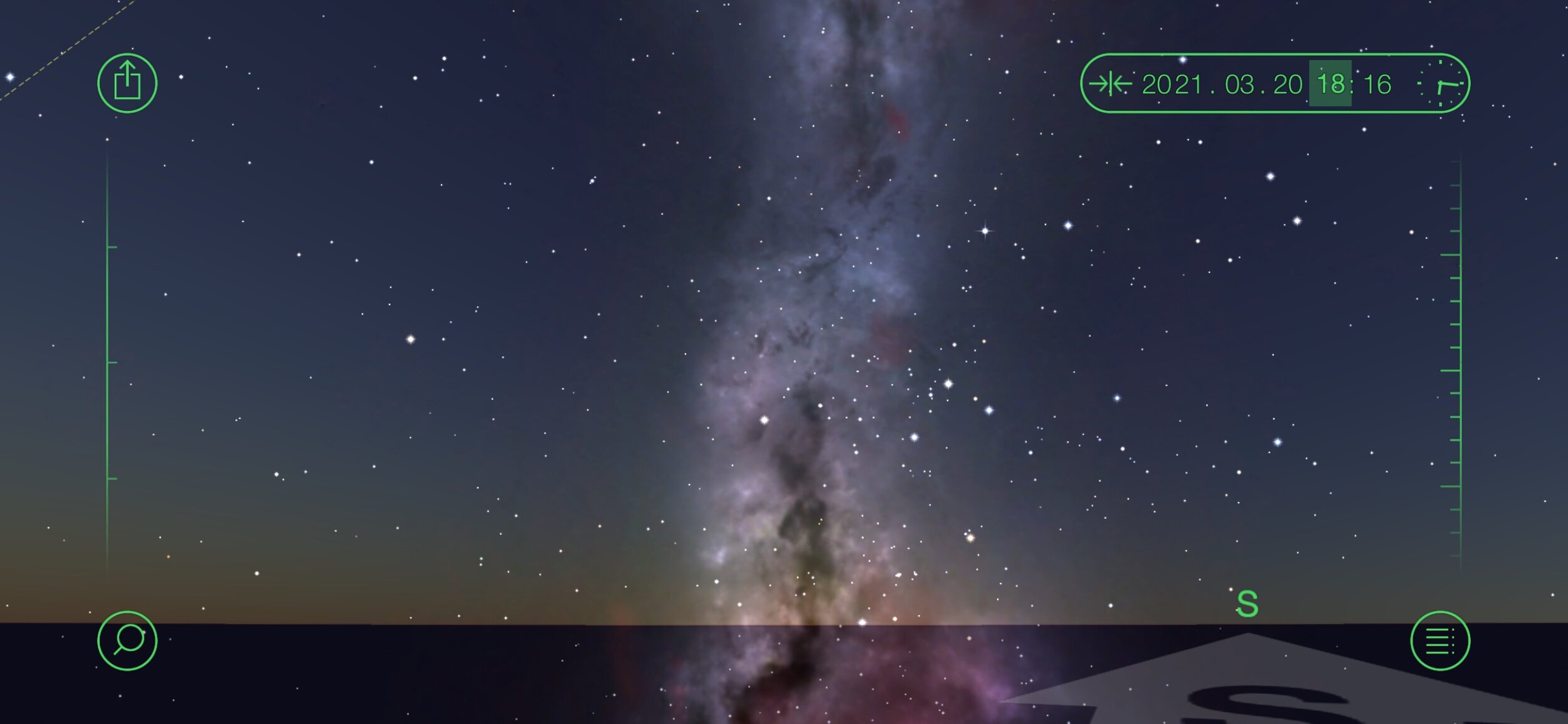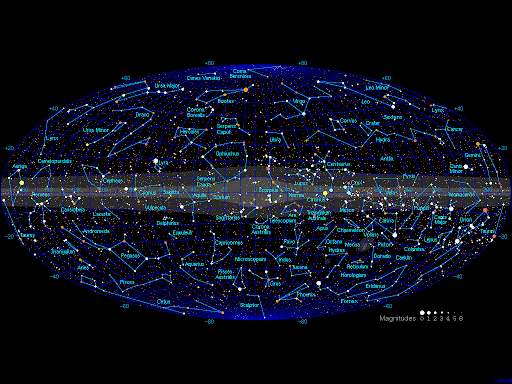Blog #22 – The Spring Equinox, the Milky Way, the constellation Gemini and the pillars of Göbekli Tepe
Is it possible to visualise the evolution of the human appreciation for the night sky? From the setting sun to the precession of the equinox, can we imagine when and how humans developed their appreciation for the passage of time tracked in the sky – and its significance to our world view and higher spiritual natures.
At what point in history might humans first appreciated that the bright life-giving sun was an identifiable external object – one that could be predicted and expected from day to day. Having evolved near the equator the year’s seasonality would not have been much to notice but as humans moved north and south from their place of origin near the equator, changes in the sun’s strength and height would become more and more noticeable – longer summer days and shorter winter ones. Tracking these changes over twelve months would have them notice that their world was resetting back to its starting position. Spring equinox would signal the return of warm and plenty. Fall equinox would be good time to prepare for the coming winter.
Would early humans have noticed the phases of the moon before or after they noticed the changes in the sun. Although its shape and location changes drastically from night to night, the changing light is less important than the changing warmth of the sun. Nevertheless, the moon’s growth and shrinking would be easily observed in only 28 days rather than the months required for noticing seasonal changes in the sun.
The planets, aptly called the "wandering stars" by the Greeks, must have been a significant observation of early humans. The movement of just these five heavenly bodies was not like the other stars. These small dots of light zoomed around more or less independent of the sun, moon and stars. Two never wandered far from the sun, these are the two inner planets Mercury and Venus. The others wandered further, but never strayed too far up or down from the path of the sun.
Early humans in their developing appreciation of the stary world would have noted the paths of the sun, moon and planets travelling through a backdrop of the “fixed stars”. While these heavenly bodies would never wander too far north or south of the center, they could be found in any of the different zodiac constellations. As the months go by, the sun rises sequentially in Pisces, Aries, Taurus, Gemini, Cancer, Leo, Virgo, Libra, Scorpio, Sagittarius, Capricorn and Aquarius (Figure 1).
Figure 1. Artistic impression of the zodiac constellations. Note the opposition between Taurus and Scorpio (https://www.amazon.ca/Hippolya-Tablecloth-Constellations-Astrology-Divination/dp/B082RVLNXC/ref=asc_df_B082RVLNXC/ ).
While the sun, moon and planets, seemed to restrict their movements to within the band of the zodiac constellations, the bright collection of the stars of the Milky Way was on its own at a noticeably different angle. Our Milky Way Galaxy, although invisible to the modern city-dweller, would have shone brightly as a across the sky separate from the zodiac. It would have been unmistakable to the hunter gathers spending their nights outside. In one night, it could go from straight up and down (Figure 2) to lying flat along the horizon several hours later (Figure 3 - corkscrewing across the night sky.
Figure 2. Sky chart of the Milky Way '“standing upright” near sunset on the Spring Equinox 2021 (https://starwalk.space/en).
Figure 3. Sky chart of the Milky Way “laying down” near midnight on the Spring Equinox 2021 (https://starwalk.space/en).
Like the band of the Zodiac, the Milky Way is always accompanied by its own constellations. For instance, Cygnus the Swan seems to be fly down the Milky Way near the Great Rift (Figure 4).
Figure 4. The constellation Cygnus the Swan and the Milky Way with the Great Rift opening up towards the upper right corner. (https://astrobackyard.com/cygnus-constellation/).
Also of great significance to a human view of the skies is that the Milky Way is varies greatly in width and brightest. Figure 5 displays the night sky of constellations with the Milky Way aligned across the centre of the view. The middle of the figure is the thickest, brightest section while the left and right edges of the ellipse are thinner and less distinct.
Figure 5. A sky chart with the Milky Way aligned horizontally through the centre of the chart. The widest, brighest section is in the middle of the figure with the constellation Scorpius. The thin, dimmer outer section is at extreme right of the figure just below the constellation Gemini (http://www.atlasoftheuniverse.com/galchart.html). Cygnus is halfway between centre and the left edge of the figure.
The widest area of the Milky Way occurs in the area where it intersects the zodiac at the edge of the constellations Scorpio (Figure 6). The dimmest, thinnest area occurs opposite this in the area at the feet of the constellation Gemini (Figure 7). These are the areas where everything can come together: the sun, the Zodiac and the Milky Way. Early humans would be well aware of all of this.
Figure 6. The middle of the Milky Way running across the tail of the constellation Scorpius ((https://starwalk.space/en).
Figure 7. The thin outer edge of the Milky Way running at the foot of the constellation Gemini (https://starwalk.space/en).
The intersections of the Zodiac and the Milky Way are fixed: one in Scorpio and one in Gemini. But these points slide through time in relation to the sunrise. Presently the constellation Pisces rises helically, i.e. at the same time as the sun, on the Spring Equinox. Two thousand years ago the constellation Aries would have been the stars that would have risen at sunrise on the Spring Equinox.
Figure 8. Sunrise on the Spring Equinox, 2021 with the helical rise of the constellation Pisces (https://starwalk.space/en).
We need to go back in time to six thousand years ago for the Spring equinox to have had the helical rising with the thin edge of the Milky Way in the constellation Gemini. This would be about the time of the pre-dynastic Egypt when humans began using written symbols[1]. The Newgrange solar temple in Ireland was built around this time. The intersection of the Milky Way with Gemini is likely also very significant for the ancient observers of the sky. For about two thousand years in mid-March the sun, Zodiac and Milky Way would all occur together. Their spirits could intermingle unlike the times before or since. These times we will refer to as the times of the Obsidian Alignment to connect with the obsidian artifacts discovered at the Göbekli Tepe site.
But what might the special alignment, the Obsidian Alignment, have to do with the early stone circles of Göbekli Tepe with their massive pairs of standing stones? The pairs of T-shaped pillars in the centre of the Göbekli Tepe stone circles were created 9,000 years BCE when the constellation Leo rose in the Spring[2]. This was almost five thousand years after the previous Obsidian Alignment of the Milky Way and Zodiac in the constellation Scorpio and five thousand years before the following Obsidian alignment in Gemini.
The scorpions and snakes embossed on the stones of Göbekli Tepe may be referring to the previous time. The preceding time of the intersection between the Zodiac and the Milky Way, the Obsidian Alignment, would have been twenty-two thousand years ago. The thick bright centre of the Milky Way and the constellation Scorpio would have risen with the sun on the Spring equinox – everything would have been lined up. This would have been the time at the end of the last ice age towards the end of the Solutrean culture with their advanced flint tool-making and advanced cave art[3]. This is also around the time the great North American mound complexes began to be constructed[4] & [5].
But the predominant motif are the looming pillars at the center of the circles (Figure 9). Could they have been constructed as a reminder that the Obsidian alignment will reoccur in Gemini? Is it possible that the two main pillars of each circle of stones somehow relate to Gemini? Was it a recognition that the precession of the equinox had moved the helical rising on the Spring Equinox had moved away from Scorpio, 17,000 years ago at the end of the last Glacial Maximum and was hoped to return in when Gemini rose helically thousands of years later? Possibly they were built to encourage the Obsidian Alignment to return?
Figure 9. Twin pillars in the centre of a Göbekli Tepe stone circle (https://www.andrewcollins.com/page/articles/Gobekli.htm).
Stone circles built over the past 10,000 years evidence human awareness of the movement in the sky[6]. The sun, moon, planets and Milky Way are easily observed over days, months and years of the lives of early humans. But their awareness of the movement of the Obsidian Alignment of the Zodiac and the Milky Way over 1,000s of years is almost impossible for modern western humans to appreciate. Yet there is great evidence for it in the art, myths and incredible constructions. It is critical to note that the cultures that built the famous stone circles aligned to the changing sky didn’t need the circles to guide them through the seasons in support of food production, they obviously had plenty of food – sufficient for them to amass the effort to construct the stone circles. The circles, such as the earliest known at Göbekli Tepe, served other non-practical, powerful creative irrational, purposes. Following the obscure changes in the Spring Equinox helical rising would have no benefit to the practicalities of human life but may have been core to the emotional and spiritual understanding of their lives – thus essential for their existence as human.
[1] https://en.wikipedia.org/wiki/Ancient_Egypt#Predynastic_period
[2] https://www.ancient.eu/article/234/gobekli-tepe---the-worlds-first-temple/
[3] https://en.wikipedia.org/wiki/Solutrean
[4] https://en.wikipedia.org/wiki/Mound_Builders
[5] https://grahamhancock.com/america-before/








